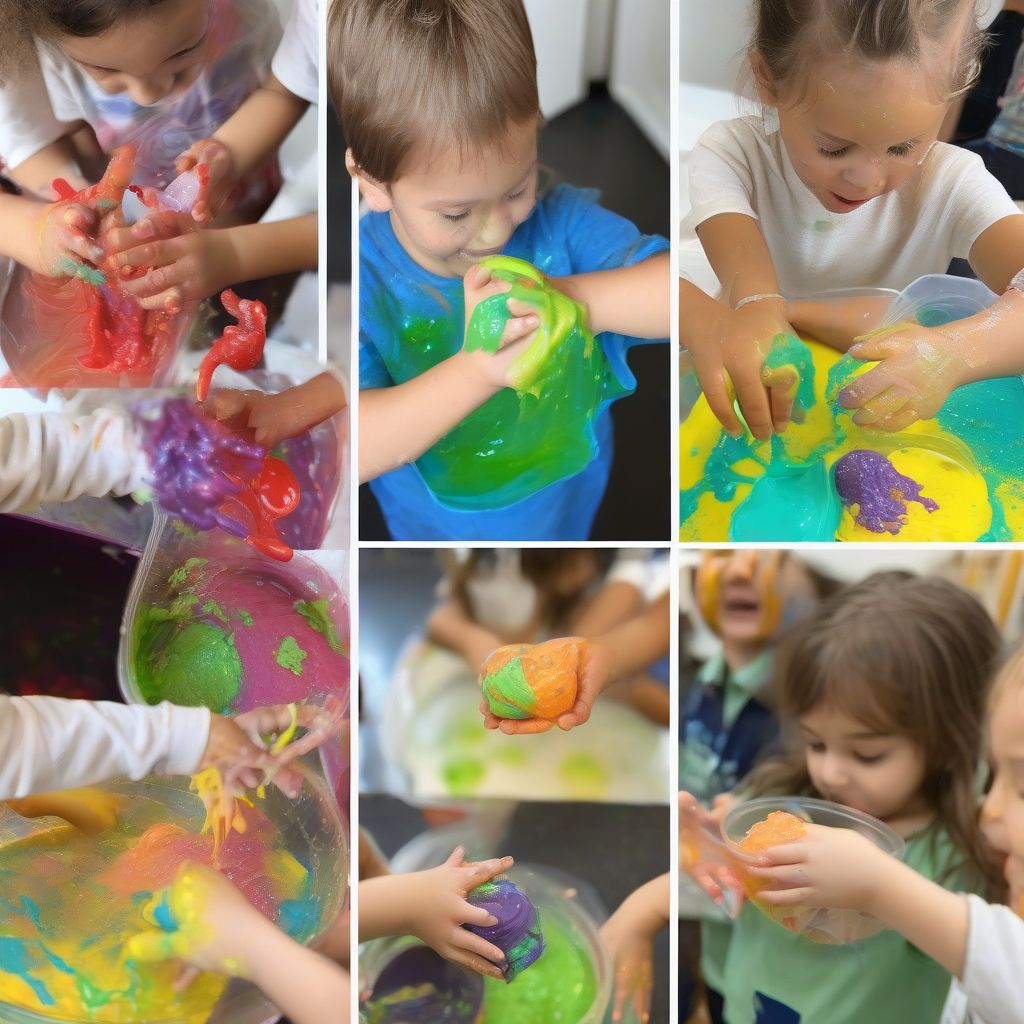“Learning is experience. Everything else is just information.” – Albert Einstein. This quote rings especially true when it comes to children. While textbooks and lectures have their place, there’s no substitute for the magic of hands-on learning. It’s about igniting their curiosity, letting them explore, experiment, and truly grasp concepts through experience.
As a nutritionist and meal-prep coach, I’ve seen firsthand how engaging kids in the kitchen – letting them chop veggies, measure ingredients, or even invent their own snack – transforms them from picky eaters to enthusiastic little chefs. That’s the power of hands-on learning. It transcends the confines of textbooks and brings knowledge to life, fostering a genuine love for learning.
So, if you’re ready to watch your little ones blossom into confident, curious learners, join me as we delve into the world of engaging, enriching, and downright fun hands-on activities!
Why Hands-On Learning? The Science Behind the Fun
Remember the joy of building your first Lego tower or the fascination of watching a caterpillar transform? Those were moments of hands-on learning, where you were actively engaged, not just passively absorbing information.
Hands-on activities are more than just fun and games; they are rooted in solid educational principles. Let’s look at what makes them so effective:
- Active Engagement: Unlike passive learning, hands-on activities require children to participate actively, keeping them focused and interested.
- Sensory Exploration: Engaging multiple senses – touch, sight, sound, smell – creates a richer learning experience and helps children retain information better.
- Concrete Understanding: Abstract concepts become tangible and easier to grasp when children can manipulate objects and see the results of their actions.
- Problem-Solving Skills: From figuring out how to build a tower that won’t topple to troubleshooting a failed science experiment, hands-on activities encourage critical thinking and problem-solving.
- Boosting Confidence: The sense of accomplishment that comes from completing a hands-on project does wonders for a child’s self-esteem.
Unleashing Creativity: Hands-on Activities for Every Interest
The beauty of hands-on learning is its versatility. Whether your child is a budding artist, a science enthusiast, or a future chef, there’s an activity to ignite their passion. Here’s a peek into some engaging hands-on learning experiences:
1. STEM Activities: Nurturing Little Scientists and Engineers
Science Experiments:
- Volcano Time! A classic for a reason! Combining baking soda and vinegar teaches children about chemical reactions in the most explosive way.
- Sink or Float: A simple tub of water becomes a science lab as kids experiment with objects of different densities, learning about buoyancy.
- Homemade Slime: This gooey concoction is a fantastic way to explore chemical properties and states of matter.
Engineering Challenges:
- Building Structures: Toothpicks and marshmallows, straws and tape, or even just playing cards! Encourage your little architects to design and build, exploring concepts like stability and balance.
- Creating a Rube Goldberg Machine: This is a fun, complex project for older kids, challenging them to create a chain reaction contraption to complete a simple task.
Technology Adventures:
- Coding for Kids: There are fantastic age-appropriate apps and programs that teach basic coding concepts through interactive games and puzzles.
2. Art Activities: Unleashing Imagination and Expression
- Nature Crafts: Leaves, twigs, stones – nature provides a treasure trove of art supplies! Encourage children to create nature collages, leaf rubbings, or even miniature fairy houses.
- DIY Playdough: Not only is it fun to play with, but making playdough is also a sensory delight, teaching kids about textures and measurements.
- Process Art: The focus here is not on the final product but on the process of creation itself. Finger painting, splatter painting, and even making a mess with shaving cream allow for pure, uninhibited artistic expression.
3. Cooking Adventures: From Picky Eaters to Little Chefs
- Mini Chefs in the Making: Involve children in age-appropriate tasks in the kitchen, from washing vegetables to measuring ingredients. They’ll learn valuable life skills and maybe even develop a taste for new foods!
- Edible Art: Turn snack time into an opportunity for creativity! Sandwiches, fruits, and vegetables can be transformed into fun shapes and designs.
- Homemade Pizza Night: Let everyone customize their pizzas, from rolling the dough to adding toppings. It’s a fun family activity and a great way to sneak in some extra veggies!
 Sensory Playtime
Sensory Playtime
4. Outdoor Exploration: Nature’s Classroom Awaits
- Nature Scavenger Hunts: A list of things to find – a red leaf, a smooth stone, a feather – transforms a walk in the park into an exciting quest.
- Backyard Camping: Pitching a tent, building a bonfire (with adult supervision, of course!), and sleeping under the stars create lasting memories and a sense of adventure.
- Gardening Fun: Planting seeds, watering plants, and watching them grow teaches children about responsibility, patience, and the wonders of nature’s life cycle.
Making it Work: Tips for Successful Hands-On Learning
- Follow Their Lead: Pay attention to your child’s interests and tailor activities accordingly. If they’re obsessed with dinosaurs, try a fossil-digging activity!
- Embrace the Mess: Hands-on learning can be messy! But that’s part of the fun. Lay down some ground rules, but don’t be afraid to let them get their hands dirty.
- Process Over Product: Focus on the journey, not just the destination. It’s about experimentation, exploration, and learning from mistakes, even if the final product isn’t “perfect.”
- Ask Open-Ended Questions: Instead of giving direct answers, encourage critical thinking by asking questions like “What do you think will happen if…?” or “How else could we do this?”
- Make it a Family Affair: Turn hands-on learning into quality time together. Whether it’s a family science experiment or a collaborative art project, learning is always more fun when it’s shared.
Conclusion: Cultivating a Lifelong Love for Learning
In a world increasingly dominated by screens, fostering a love for hands-on learning is more crucial than ever. These activities are not just about keeping children entertained; they are about equipping them with essential life skills – creativity, problem-solving, critical thinking, and a thirst for knowledge that will last a lifetime.
So, put away the screens, gather your supplies, and embark on this exciting journey of hands-on learning with your little ones. You might be surprised at the incredible things they discover and create! What exciting hands-on adventures do you have planned? Share your ideas and experiences in the comments below!
[amazon bestseller=”hands-on learning activities for kids”]
For more fantastic resources and ideas to support your child’s learning journey, be sure to check out these articles:
